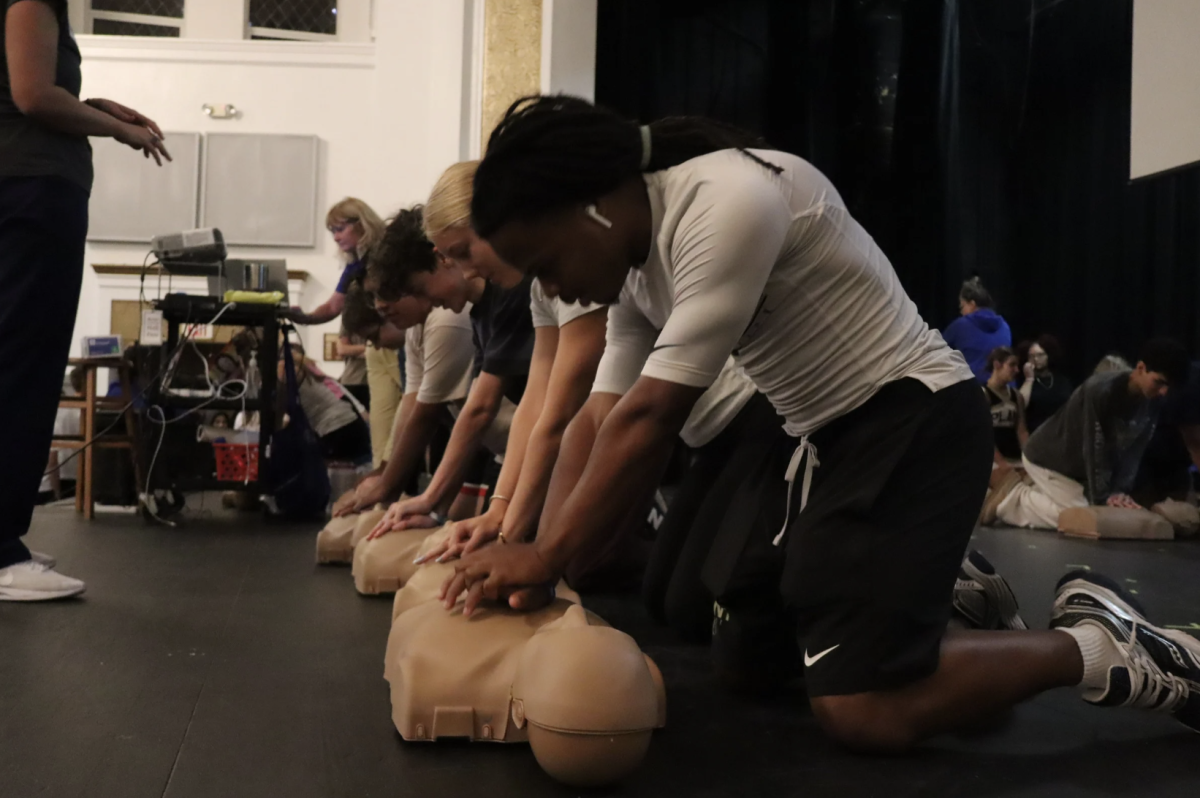Did you know CPR can double or even triple survival rates for cardiac arrest victims? Plant High School students replaced textbooks with training dummies this month as the school launched a CPR education program to teach students what to do in life-or-death emergencies. The program, which teaches students the basics of cardiopulmonary resuscitation, is part of a national movement to educate high school students in lifesaving techniques before they graduate.
Training took place on Friday, Sept. 19, during periods one through three in the auditorium. All schools are required to offer Hands-On CPR Training to juniors. This training was provided by BayCare Kids Wellness and Safety staff. Students watched a short presentation and then got the “Hands-on CPR Training” from BayCare’s medical staff.
Instructors demonstrated the correct technique in delivering chest compressions, rescue breaths and the use of automated external defibrillators, or AEDs. Students later practiced the techniques in small groups, moving between several stations to gain hands-on training.
For many, the session was their first experience with formal CPR training. Although most students had some experience with the technique through health classes or television shows, practicing compressions in real-time made the urgency and physical effort involved with doing CPR properly evident.
“I actually had fun doing the compressions; it was a new experience for me,” Plant junior Megan Canady said. “Besides that, I thought the videos were boring and uneventful.”
Vivienne Harris, a junior, said, “I thought it was informational, and I appreciate how they had us apply what we learned from the videos into real life by performing the compressions on the manikins.”
The American Heart Association reports that nearly 350,000 cardiac arrests occur outside the hospital each year in the United States. Prompt CPR doubles or even triples a person’s chance of survival. The statistics are so compelling that Plant officials view CPR education as both an educational and civic responsibility. The students were also instructed on the psychological aspect of responding to emergencies. The trainers emphasized that it is natural to panic, but that preparation and rehearsal can reduce hesitation when action must be taken most. Practice drills were used to simulate pressure scenarios and encouraged students to stay calm under stress.
Although the one-day session was merely a beginning, several students expressed interest in pursuing full CPR certification at some point in the future. Full certification involves additional training and testing, but it offers formal confirmation of proficiency, which can be worthwhile for work in childcare, lifeguarding, or healthcare.
The course culminated in a discussion of actual stories of bystanders saving lives by stepping forward to administer CPR. Such anecdotes resonated with the students, who, for the most part, considered how preparedness for the unexpected is so crucial.
As the semester progresses, CPR training will be more than just another school activity. To most, it will be a reminder that to be part of something is to be willing to help others—and that one decision, made at the right time, can be the difference.

